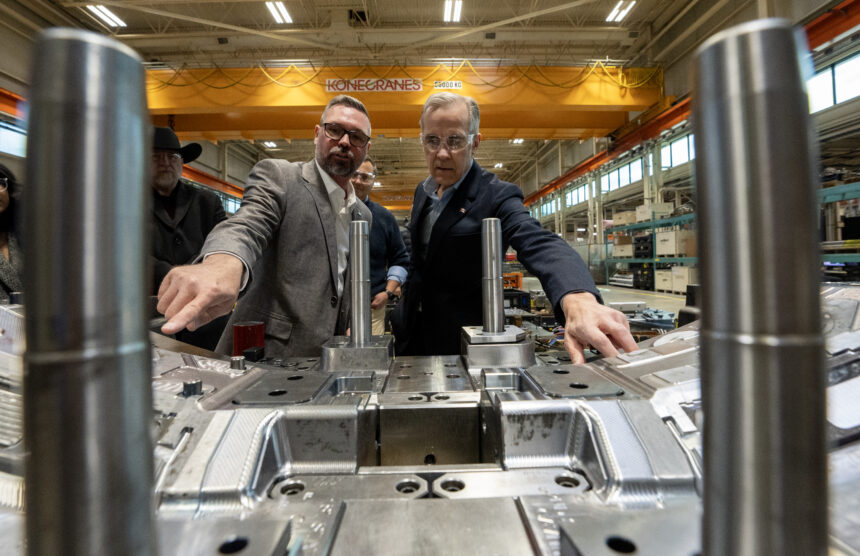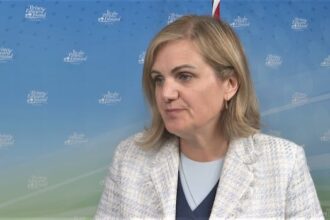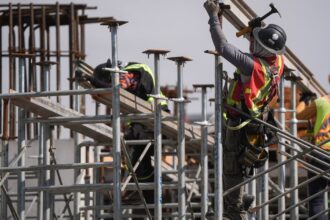In a high-stakes meeting that could reshape North America’s automotive landscape, Finance Minister Mark Carney convened with top executives from major automakers yesterday to discuss Canada’s position in ongoing trade negotiations with the United States. The talks, held behind closed doors at the Finance Ministry in Ottawa, come at a critical juncture as both nations work to resolve tensions over supply chain integration and electric vehicle production.
“The automotive sector represents the backbone of our manufacturing economy, supporting hundreds of thousands of Canadian jobs,” Carney stated following the three-hour session. “We’re committed to strengthening our position in the global supply chain while ensuring Canadian workers and communities benefit from the industry’s transition.”
Industry sources reveal the discussions centered on potential amendments to the Canada-United States-Mexico Agreement (CUSMA), with particular focus on rules of origin requirements and the integration of critical minerals for electric vehicle batteries. The meeting included executives from Ford, General Motors, Honda, and Toyota, all of which maintain significant production facilities across Ontario’s manufacturing corridor.
The timing proves particularly significant as Washington signals potential changes to its import policies. Recent statements from U.S. Trade Representative Katherine Tai suggest America may seek stricter domestic content requirements for vehicles sold in the U.S. market—a move that could potentially disadvantage Canadian parts manufacturers unless addressed through bilateral negotiations.
Economic analysts from the Royal Bank of Canada estimate that automotive manufacturing contributes approximately $19 billion annually to Canada’s GDP, with nearly 85% of vehicles produced destined for export to the United States. Any disruption to this trade relationship could have profound implications for communities from Windsor to Oshawa.
“Minister Carney demonstrated a deep understanding of the competitive pressures facing our industry,” noted Jennifer Robertson, CEO of the Canadian Automotive Parts Manufacturers’ Association, who attended the meeting. “The government appears committed to defending our integrated supply chains while positioning Canada as a leader in next-generation vehicle technology.”
The talks also addressed Canada’s Critical Minerals Strategy, which aims to leverage the country’s abundant resources of lithium, nickel, and cobalt—essential components for electric vehicle batteries. Industry observers suggest Carney is working to position Canadian suppliers as preferred partners for U.S. manufacturers seeking to comply with stringent “made in North America” requirements under recent U.S. climate legislation.
Labour representatives present at the meeting pushed for commitments to workforce development as the industry undergoes transformation. “The transition to electric vehicles will require significant reskilling of our workforce,” said Martin Trudeau of Unifor, Canada’s largest private-sector union. “We emphasized the need for government support in this transition to ensure Canadian workers remain competitive.”
The meetings continue a series of high-level engagements between Canadian officials and industry stakeholders as the government develops its position ahead of formal trade discussions with Washington expected later this month. Sources close to the negotiations suggest Carney’s team is preparing a comprehensive proposal that would strengthen cross-border manufacturing while addressing American concerns about supply chain security.
As global automotive production faces unprecedented change driven by electrification and automation, yesterday’s discussions highlight the delicate balance Canada must strike—maintaining its deep integration with the U.S. market while carving out a distinctive role in the industry’s future. With billions in investment and thousands of jobs at stake, the question remains: can Canada successfully navigate these complex negotiations to emerge as a stronger player in the North American automotive ecosystem?










